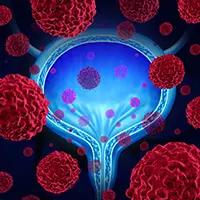Bempegaldesleukin/Nivolumab Combo Upholds Durable Benefit in Metastatic Melanoma
November 13, 2020 - The combination of bempegaldesleukin and the PD-1 inhibitor nivolumab elicited a confirmed best overall response rate of 53% in efficacy-evaluable patients with metastatic melanoma.
Adi Diab, MD

November 13, 2020 - The combination of bempegaldesleukin (NKTR-214) and the PD-1 inhibitor nivolumab (Opdivo) elicited a confirmed best overall response rate (ORR) of 53% in efficacy-evaluable patients with metastatic melanoma, according to updated phase 1/2 findings of the PIVOT-02 trial (NCT02983045) that were presented during the virtual 2020 SITC Annual Meeting.1
Results showed that 34% (n = 13/38) of patients experienced a complete response (CR), and 47% (n = 18/38) achieved a 100% reduction in RECIST target lesions from treatment with the combination.
“The combination of bempegaldesleukin plus nivolumab demonstrated promising clinical activity with deep and durable responses…with a median [progression-free survival] of 30.9 months,” lead study author Adi Diab, MD, an associate professor in the Department of the Melanoma Medical Oncology, Division of Cancer Medicine, at The University of Texas MD Anderson Cancer Center, said in a presentation during the meeting.
Despite the use of checkpoint inhibitors in patients with metastatic melanoma, an unmet need remains for effective treatments that produce long-lasting responses in this patient population, Diab explained.
Bempegaldesleukin is a CD122-preferential interleukin (IL)-2 pathway agonist that increases tumor-infiltrating lymphocytes, T-cell clonality and PD-1 expression. When used in combination with nivolumab, tumors can be converted tumors from PD-L1–negative at baseline to PD-L1–positive on-treatment. Moreover, levels of baseline tumor-infiltrating lymphocytes and T-cell inflammation are found to be predictive of a poor response to checkpoint inhibitors.
The FDA granted a breakthrough therapy designation in July 2019 to the combination of NTRK-214 and nivolumab for the treatment of patients with previously untreated unresectable or metastatic melanoma. The decision was based on preliminary results of PIVOT-02, which demonstrated clinical activity and safety in this patient population.2
In the multicenter PIVOT-02 trial, there was a dose escalation phase across a range of solid tumors in which bempegaldesleukin and nivolumab were given at varying doses. A 0.006 mg/kg every-3-week dose of bempegaldesleukin plus nivolumab at 360 mg every 3 weeks was determined as the recommended phase 2 dose in patients with melanoma and metastatic urothelial cancer, both in the first-line setting. Other tumor types are being evaluated in ongoing expansion arms.
In the melanoma cohort, patients had a known BRAF status, measurable disease per RECIST v1.1 criteria, and an ECOG performance status of 0 or 1. Forty-one patients with melanoma were enrolled and received at least 1 dose of bempegaldesleukin/nivolumab.
As of September 1, 2020, 38 patients were evaluable for efficacy; 3 patients had discontinued prior to the first scan due to an unrelated treatment-emergent adverse event (n = 1) and patient decision (n = 2). All patients on study are now off treatment.
Responses were measured per RECIST 1.1 criteria by blinded independent central radiology review for the efficacy-evaluable patients. The data cutoff date was September 1, 2020.
More than half (58.5%) of patients were male, the median age was 63 years (95% CI, 22-80), and 78% of patients had an ECOG performance status of 0 versus 22.0% who had 1. A total 58.5% had PD-L1–positive tumors, 34.1% had PD-L1–negative tumors, and 7.3% had unknown PD-L1 expression. Additionally, 26.8% of patients did have liver metastases.
A total 31.7% of patients had a BRAF mutation compared with those with BRAF wild-type or non-V600 mutation (65.9%) or an unknown BRAF status (2.4%). Additionally, 29.3% of patients had elevated serum lactate dehydrogenase levels (LDH) above the upper limit of normal (ULN). Moreover, patients had either stage M1a disease (12.2%), M1b disease (39.0%), or M1c disease (48.8%).
The median number of treatment cycles was 9 (range, 1-35), and 29 patients (70.7%) had more than 6 cycles. Additional data showed that 80% (n = 16/20) of patients had ongoing responses. At 29 months of follow-up, the median duration of response was not reached.
When stratified by PD-L1 expression, the ORR was 39%, 64%, and 33% in those with PD-L1–negative, –positive, and –unknown status, respectively. Patients whose LDH was greater than ULN had an ORR of 46%, and those with liver metastases experienced a 50% ORR, which were all CRs. There was a –78.5% mean reduction from baseline; the median time to response and CR was 2.0 months and 7.9 months, respectively.
The median progression-free survival (PFS) was 30.9 months (95% CI, 5.3–not estimated [NE]) and the median overall survival (OS) was not reached (95% CI, NE–NE). The 12-, 24- and 36-month PFS rates were 56.2%, 53.1%, and 45.5%, respectively. The OS rates at 12 months, 24 months, and 36 months were 82.3%, 77.0%, and 70.9%, respectively, based upon Kaplan-Meier estimates.
Moreover, biomarker translational data that were presented showed that CD8+ difference in polyfunctional strength index between C1D1 and C1D8 (PSD) and eosinophils predicted response to the combination of bempegaldesleukin and nivolumab.
Regarding safety, the combination was also found to be well tolerated. Grade 3/4 treatment-related adverse events (TRAEs) occurred in 17.1% of patients, which included acute kidney injury (4.9%), atrial fibrillation (4.9%), and dizziness, dyspnea, hyperglycemia, hypernatremia, and hypoxia (2.4% each). Immune-mediated adverse events occurred in 4.9% of patients, and 12.2% of patients discontinued either bempegaldesleukin or nivolumab due to a TRAE. There were no treatment-related deaths.
Investigators also noted that there were no new TRAEs since a prior presentation of PIVOT-02 data at the 2019 SITC Annual Meeting.
Registrational phase 3 trials are evaluating bempegaldesleukin and nivolumab in patients with metastatic melanoma in the first-line metastatic setting (PIVOT IO 001; NCT03635983) and in the adjuvant setting (PIVOT-12; NCT04410445).
References
- Diab A, Tykodi SS, Daniels GA, et al. Progression-free survival and biomarker correlates of response with BEMPEG plus NIVO in previously untreated patients with metastatic melanoma: results from the PIVOT-02 study. Presented at: 2020 SITC Annual Meeting; November 10-15, 2020; virtual. Abstract 420.
- Nektar Therapeutics and Bristol-Myers Squibb announce U.S. FDA breakthrough therapy designation for bempegaldesleukin (NKTR-214) in combination with Opdivo (nivolumab) for the treatment of patients with untreated advanced melanoma. News release. Nektar Therapeutics. August 1, 2019. Accessed August 1, 2019. https://bit.ly/2ZnIeKw



